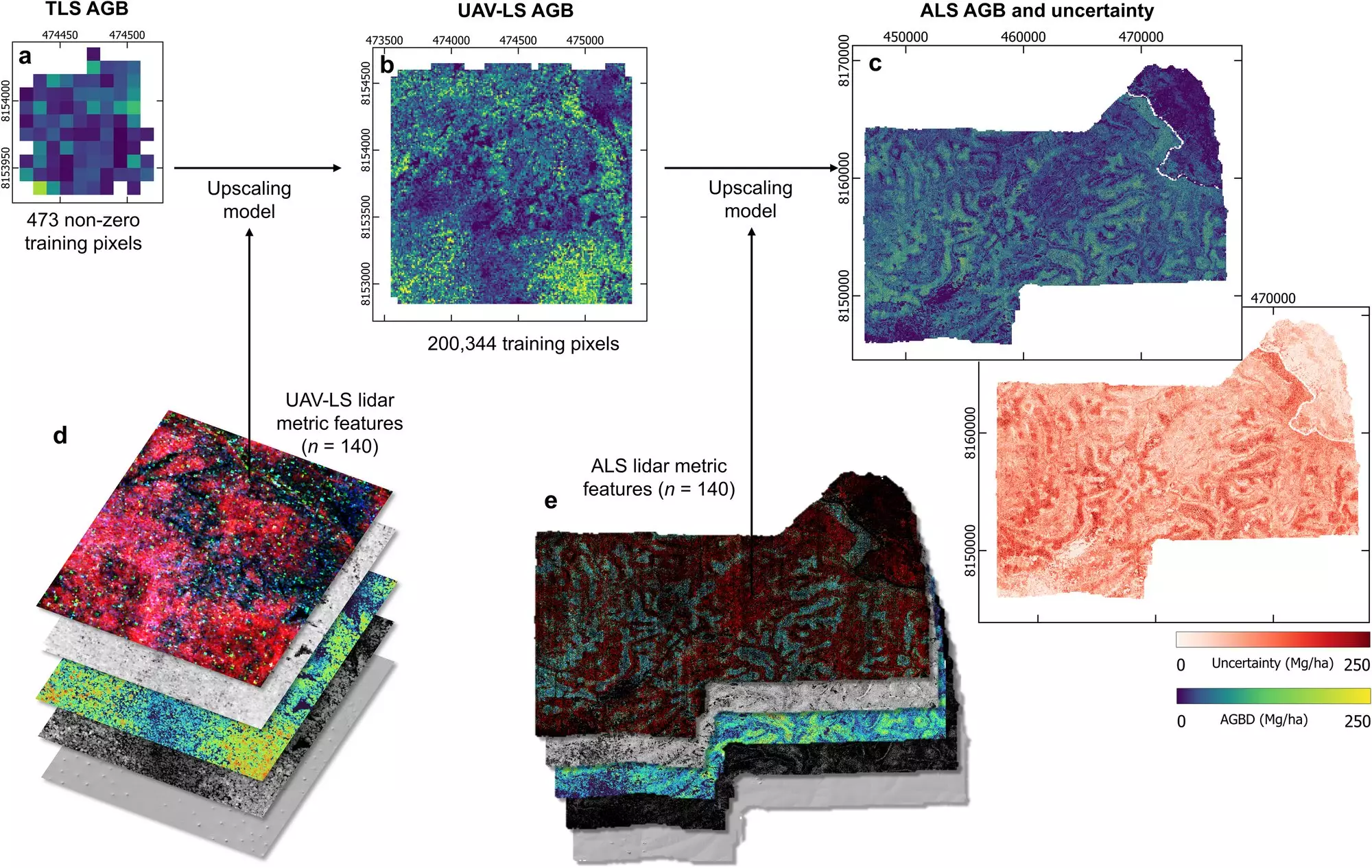The inherent capabilities of Mozambique’s miombo woodlands, which are significant for carbon capture and storage, have often been inadequately acknowledged in discussions surrounding environmental conservation and sustainability. Recent findings, spearheaded by an interdisciplinary team led by carbon data provider Sylvera, peel back the layers of underestimation concerning the carbon stock of these vital ecosystems. According to their research published in *Communications Earth & Environment*, it appears that the miombo woodlands can sequester anywhere from 1.5 to 2.2 times more carbon than conventional methodologies have suggested. This revelation carries profound implications, not just for the environment, but also for millions of lives woven into the fabric of these rich ecosystems.
The miombo woodlands, characterized by a distinctive variety of flora including the miombo trees, play a crucial role across Sub-Saharan Africa. They are the lifeblood of local economies, providing resources that sustain livelihoods while regulating ecological dynamics such as climate and water cycles. With a cultural and spiritual heartbeat that resonates throughout the region, these forests are more than just a collection of trees; they are an indispensable component of community identity and tradition. However, alarming patterns of deforestation have occurred over the past 40 years, shrinking these woodlands from 2.7 million square kilometers to a mere 1.9 million. In light of these statistics, a call for meticulous, ongoing monitoring becomes urgent.
Innovative Methodologies and Groundbreaking Findings
To derive more accurate estimates of carbon storage, researchers embarked on an ambitious project in 2022, collaborating with local Mozambican entities to amass a staggering 450 billion 3D measurements across an area of 500 square kilometers— a region significantly larger than Manhattan. By employing cutting-edge technologies like ground-based, drone, and helicopter-based laser scanning, the researchers meticulously assessed both degraded and intact miombo woodlands.
The analysis turned conventional wisdom on its head. Traditional allometric models, which typically establish a correlation between accessible tree metrics—such as stem diameter and height—to estimate carbon storage, have proven flawed. These methods fall short, particularly when it comes to large trees that play an outsized role in carbon sequestration. The researchers’ innovative laser scanning techniques have enabled a more robust understanding, revealing that the carbon store of these woodlands dramatically exceeds previous models.
Professor Mat Disney from UCL Geography poignantly noted the significance of these findings, emphasizing that the revelations not only enhance our understanding of these ecosystems but also catalyze an urgent imperative for their protection. The ramifications of this research extend beyond a mere academic inquiry; they underscore the pressing need for proactive conservation strategies.
Global Implications for Carbon Strategies
When extrapolating the data from their study, the implications are staggering. Across all miombo woodlands, the potential carbon storage was estimated to be 13.6 billion metric tons of carbon dioxide equivalent (CO2e), a figure that rivals annual atmospheric CO2 increases. While such estimates require further verification, the findings illuminate a pivotal climate solution that has been largely overlooked.
The destruction of these woodlands could, therefore, release a considerably greater amount of carbon into the atmosphere than current estimates suggest. Consequently, governments, financial institutions, and businesses must redirect their focus toward safeguarding these vital forests as a key strategy in mitigating climate change. The accuracy of the 3D laser measurements affirms the tangible value of investing in nature-based solutions, reinforcing the correlation between financial investment and ecological restoration.
Driving Change Through Technology and Awareness
The heart of this research is not merely about uncovering truths; it is about empowering communities and investors alike with the transformative potential of technology. This innovative approach has laid the groundwork to enhance the credibility of carbon credits, reinforcing the belief that finance can—and should—flow into sustainable initiatives.
Allister Furey, CEO and co-founder of Sylvera, asserts that effectively combating climate change is fundamentally a finance issue. He notes a pressing need for financial resources to invigorate the recognized solutions that nature provides, while illuminating the disconnect between investors and the natural carbon sink opportunities. The technological advancements articulated in their study help bridge this gap, generating greater investor confidence by utilizing sophisticated methodologies for quantifying carbon stored in natural environments.
Looking ahead, Sylvera’s commitment to integrating this superior dataset into broader climate products heralds a new epoch in understanding global carbon dynamics. It positions Mozambique not just as a regional player but as a beacon of hope for effective climate action and conservation efforts worldwide.
The power of these findings resonates with urgency and possibility, offering an optimistic lens through which we can envision a sustainable future for Mozambique’s miombo woodlands and, by extension, for the planet.


Leave a Reply